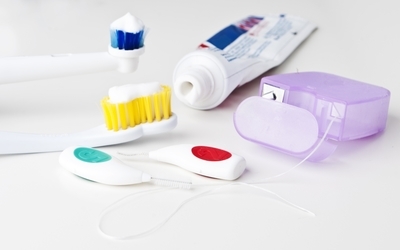Oral health concerns seem like small fry in the grander scheme of overall wellbeing, but having healthy teeth and gums is a key component in your wellness, as well as in your dazzling smile. Simple dental care habits, such as brushing and flossing, can be all you need to protect your oral health, but are you getting it right? Let’s take a look at the best tips for preventing gum disease and staving off cavities:
1. Brush twice a day: This seems simple but so many people neglect a night-time brushing. When you are going over those pearly whites, make sure you take the time to do a thorough job. Remember; don’t rush that brush.
2. Use the right tools: These days, there seems to be a myriad of different toothpastes and brushes, but all you need to do is ensure your toothpaste contains fluoride, and your toothbrush has soft bristles and fits your mouth comfortably. Although an electric or battery-operated toothbrush isn’t vital for oral health, it may be a good thing to consider. These kinds of brushes are better at reducing plaque and mild forms of gum disease, such as gingivitis, than manual brushing, as well as being beneficial if you have arthritis or other problems that make it difficult to brush effectively.
3. Sort out your brushing technique: When you brush, your toothbrush should be held at a slight angle so that the bristles are aimed towards the area where your tooth meets your gum. Make sure you brush gently – so you don’t wear away the enamel – and use short back-and-forth motions. You should brush the outside, inside and chewing surfaces of your teeth, as well as your tongue.
4. Take care of your equipment: After brushing, it’s important to make sure your toothbrush is kept clean by rinsing it and storing it in an upright position. This allows your brush to air-dry before you use it again. Don’t get in the habit of covering your toothbrushes or storing them in closed containers, as this can encourage bacteria to grow – do you really want to be putting that in your mouth?
5. Replace your toothbrush when needed: You know it’s time to replace your toothbrush when the bristles become frayed. However, as a general rule, you should invest in a new toothbrush or a replacement head for your electric or battery-operated toothbrush every three to four months.
6. Don’t forget to floss: Daily flossing is important because you can’t reach the tight spaces between your teeth and under the gum line with a toothbrush. It doesn’t matter if you brush first or floss first; the main thing to ensure is that you do a thorough job. However, if you floss before you brush, you might enable more fluoride from your toothpaste to reach between your teeth.
7. Use the right flossing technique: Don’t forget you need to be gentle on your gums, so you should be guiding the floss between your teeth using a rubbing motion. Don’t snap the floss into your gums but gently guide it towards the gum line, and then curve it against one tooth at a time. You should unwind fresh floss as you progress to other teeth, so make sure you have a decent amount of floss to start with, like 18 inches or so. You should wind most of the floss around the middle finger on one hand, and the rest around the middle finger on the other hand. Grip the floss tightly between your thumbs and forefingers before you proceed.
